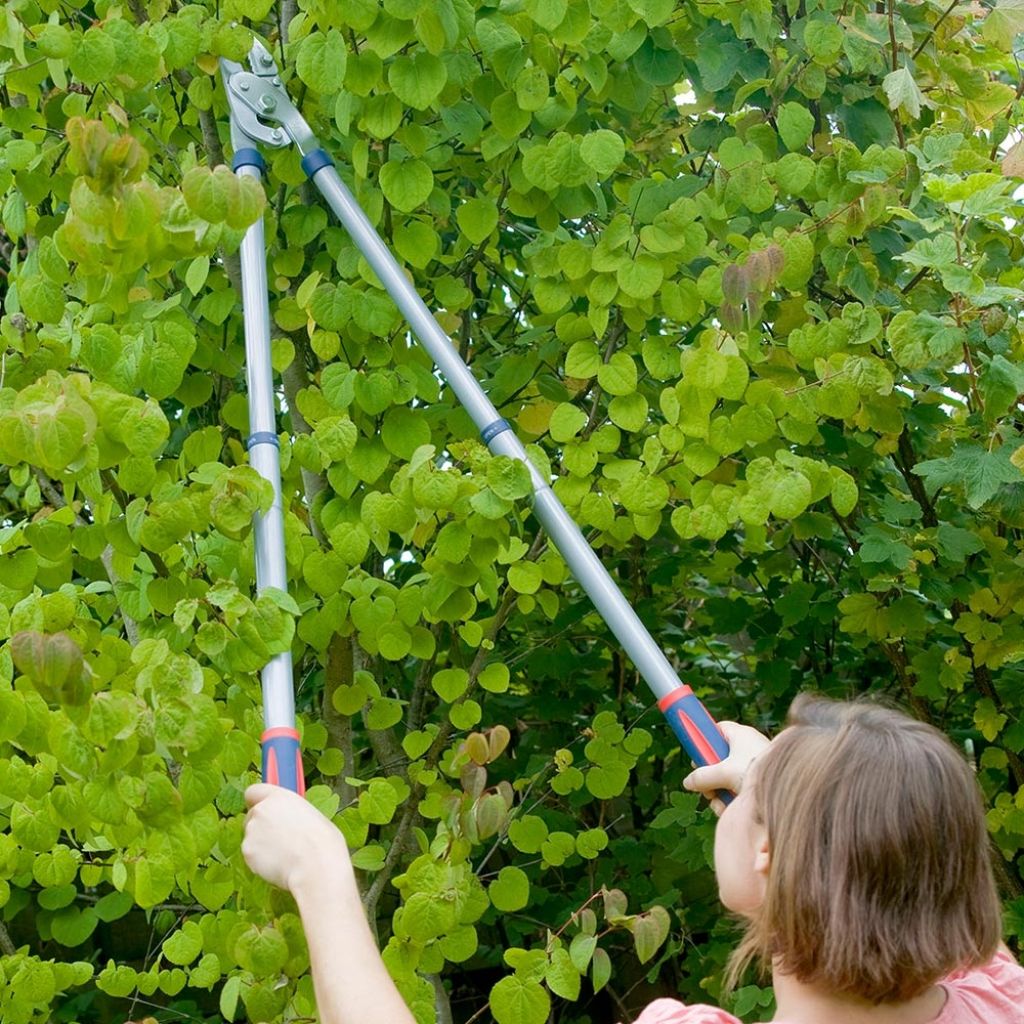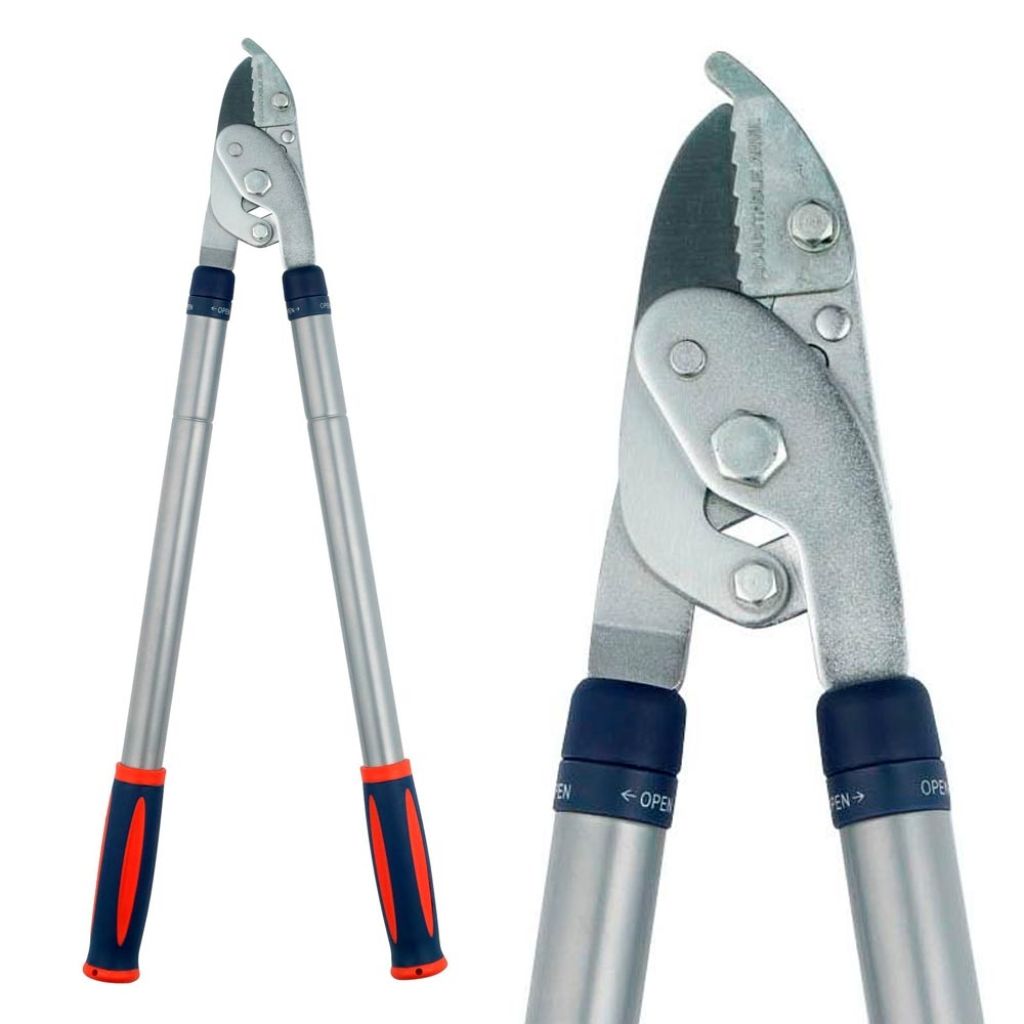

Spear & Jackson telescopic handle anvil loppers


Spear & Jackson telescopic handle anvil loppers
Spear & Jackson telescopic handle anvil loppers
Well-crafted tool with a sturdy appearance. My experience with similar tools over several decades makes me regret a relative deficiency in the locking mechanism of the arm extensions, but also acknowledge that hard materials (dry branches) are a very severe test. The flexibility and rigidity of the steel arms are a guarantee to prevent excesses, which is not the case with other aluminum arms that deform almost irreversibly! The opening of the clamps could have a few millimeters more to be ideal. Finally, I would appreciate being able to proactively purchase one or more spare anvils, as they are almost always the main weakness of this type of tool when used intensively. This should be offered in a kit from the first purchase.
Dominique, 21/10/2020
We guarantee the quality of our plants for a full growing cycle, and will replace at our expense any plant that fails to recover under normal climatic and planting conditions.
These telescopic handle anvil loppers by Spear & Jackson are specially equipped with a gear mechanism that multiplies the cutting force by +60% and extendable arms, increasing its reach up to 94 cm. It is a perfect tool for pruning the hardest and least accessible woods and adapts to users who do not have much strength or who simply want to make their lives easier! Equipped with anvil blades, it is useful for cutting hard, dry, and dead branches and stems with diameters up to 4.2 cm. It is a robust and durable model, equipped with polished and lacquered steel blades, giving them exceptional resistance to rust. it is ergonomic, with long, extremely strong tubular steel arms that are coated with PVC for better longevity and to fight against corrosion. Their length can be easily adjusted with a rotating locking system. The comfortable handles are made of a soft-touch material. It is a high-quality and versatile lopper that will last for many years. This product is guaranteed for 10 years by the manufacturer.
The range of Razorsharp Advance pruning tools developed by Spear & Jackson incorporates mechanical innovations, including gear and ratchet mechanisms, ergonomic design, and new materials, to facilitate garden pruning work and make it more enjoyable. The anvil loppers with telescopic handles bring together the same type of blades as anvil secateurs but are larger and mounted on handles whose reach can be adjusted. The upper blade is thin and sharp and comes into contact with the lower blade made of a metal plate. This "anvil" allows for better grip of the branch to be cut and distributes the applied pressure. This tool is thus suitable for pruning dead or very dry and hard branches and stems. Avoid softer and greener woods as this tool would crush their tissues. With their extendable arms, they are perfect tools for pruning subjects with hard wood that require a larger cutting width and a wider tool reach, such as thorny bushes. To change the length of the handles, unlock by turning anticlockwise, extend by pulling, and then lock the length by turning clockwise.
Technical specifications and "plus" product:
- Hardened carbon steel blades, very robust, for increased durability.
- Coated and lacquered for better rust resistance.
- Gear mechanism multiplying the cutting force by +60%.
- Anvil blade useful for cutting dead, dry, and/or hard branches and stems.
- Tubular steel handle for maximum strength.
- Telescopic handles with "Twist and Lock" rotating locking system, extending up to 610-940 mm.
- PVC coating for anti-corrosion effect and maximum robustness.
- Shock-absorbing handles, soft to the touch for great ergonomics.
- 10-year warranty.
Tool features
Technical data
Detailed features
Tips
-
, onOrder confirmed
Reply from on Promesse de fleurs
Haven't found what you were looking for?
Hardiness is the lowest winter temperature a plant can endure without suffering serious damage or even dying. However, hardiness is affected by location (a sheltered area, such as a patio), protection (winter cover) and soil type (hardiness is improved by well-drained soil).

Photo Sharing Terms & Conditions
In order to encourage gardeners to interact and share their experiences, Promesse de fleurs offers various media enabling content to be uploaded onto its Site - in particular via the ‘Photo sharing’ module.
The User agrees to refrain from:
- Posting any content that is illegal, prejudicial, insulting, racist, inciteful to hatred, revisionist, contrary to public decency, that infringes on privacy or on the privacy rights of third parties, in particular the publicity rights of persons and goods, intellectual property rights, or the right to privacy.
- Submitting content on behalf of a third party;
- Impersonate the identity of a third party and/or publish any personal information about a third party;
In general, the User undertakes to refrain from any unethical behaviour.
All Content (in particular text, comments, files, images, photos, videos, creative works, etc.), which may be subject to property or intellectual property rights, image or other private rights, shall remain the property of the User, subject to the limited rights granted by the terms of the licence granted by Promesse de fleurs as stated below. Users are at liberty to publish or not to publish such Content on the Site, notably via the ‘Photo Sharing’ facility, and accept that this Content shall be made public and freely accessible, notably on the Internet.
Users further acknowledge, undertake to have ,and guarantee that they hold all necessary rights and permissions to publish such material on the Site, in particular with regard to the legislation in force pertaining to any privacy, property, intellectual property, image, or contractual rights, or rights of any other nature. By publishing such Content on the Site, Users acknowledge accepting full liability as publishers of the Content within the meaning of the law, and grant Promesse de fleurs, free of charge, an inclusive, worldwide licence for the said Content for the entire duration of its publication, including all reproduction, representation, up/downloading, displaying, performing, transmission, and storage rights.
Users also grant permission for their name to be linked to the Content and accept that this link may not always be made available.
By engaging in posting material, Users consent to their Content becoming automatically accessible on the Internet, in particular on other sites and/or blogs and/or web pages of the Promesse de fleurs site, including in particular social pages and the Promesse de fleurs catalogue.
Users may secure the removal of entrusted content free of charge by issuing a simple request via our contact form.
The flowering period indicated on our website applies to countries and regions located in USDA zone 8 (France, the United Kingdom, Ireland, the Netherlands, etc.)
It will vary according to where you live:
- In zones 9 to 10 (Italy, Spain, Greece, etc.), flowering will occur about 2 to 4 weeks earlier.
- In zones 6 to 7 (Germany, Poland, Slovenia, and lower mountainous regions), flowering will be delayed by 2 to 3 weeks.
- In zone 5 (Central Europe, Scandinavia), blooming will be delayed by 3 to 5 weeks.
In temperate climates, pruning of spring-flowering shrubs (forsythia, spireas, etc.) should be done just after flowering.
Pruning of summer-flowering shrubs (Indian Lilac, Perovskia, etc.) can be done in winter or spring.
In cold regions as well as with frost-sensitive plants, avoid pruning too early when severe frosts may still occur.
The planting period indicated on our website applies to countries and regions located in USDA zone 8 (France, United Kingdom, Ireland, Netherlands).
It will vary according to where you live:
- In Mediterranean zones (Marseille, Madrid, Milan, etc.), autumn and winter are the best planting periods.
- In continental zones (Strasbourg, Munich, Vienna, etc.), delay planting by 2 to 3 weeks in spring and bring it forward by 2 to 4 weeks in autumn.
- In mountainous regions (the Alps, Pyrenees, Carpathians, etc.), it is best to plant in late spring (May-June) or late summer (August-September).
The harvesting period indicated on our website applies to countries and regions in USDA zone 8 (France, England, Ireland, the Netherlands).
In colder areas (Scandinavia, Poland, Austria...) fruit and vegetable harvests are likely to be delayed by 3-4 weeks.
In warmer areas (Italy, Spain, Greece, etc.), harvesting will probably take place earlier, depending on weather conditions.
The sowing periods indicated on our website apply to countries and regions within USDA Zone 8 (France, UK, Ireland, Netherlands).
In colder areas (Scandinavia, Poland, Austria...), delay any outdoor sowing by 3-4 weeks, or sow under glass.
In warmer climes (Italy, Spain, Greece, etc.), bring outdoor sowing forward by a few weeks.

































